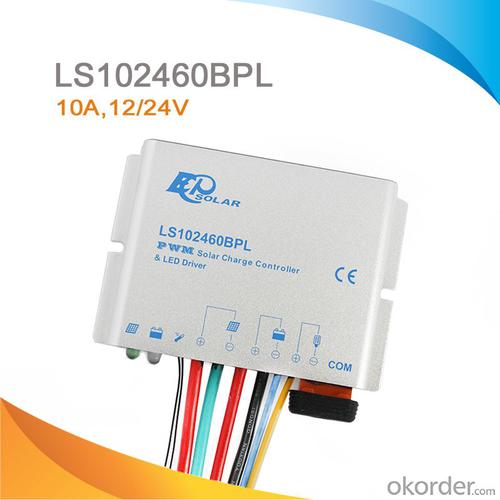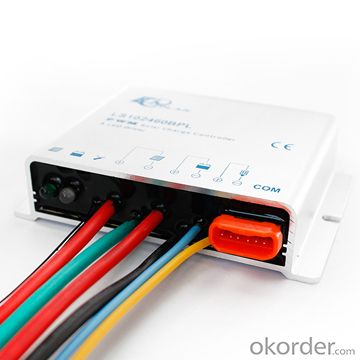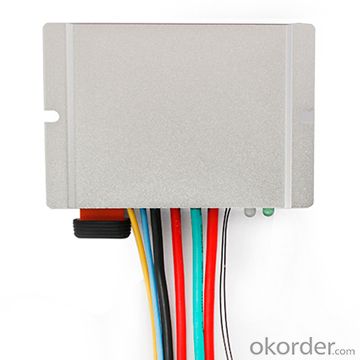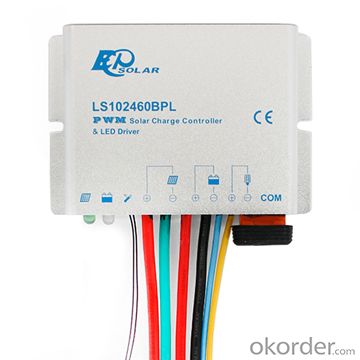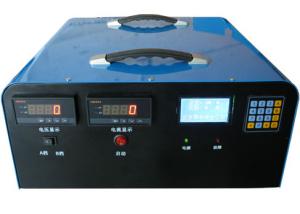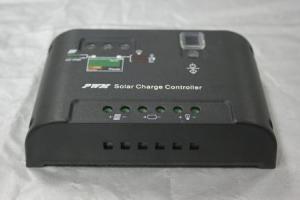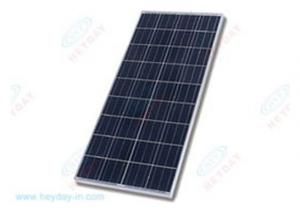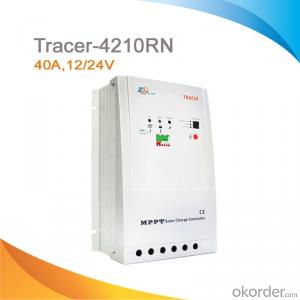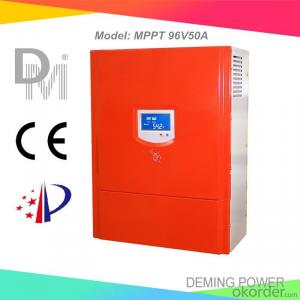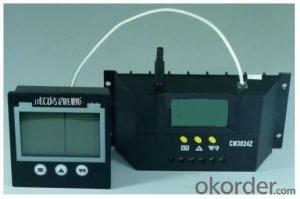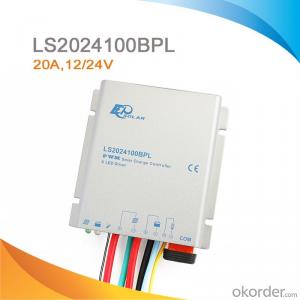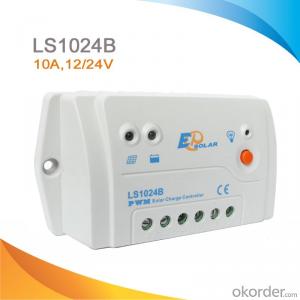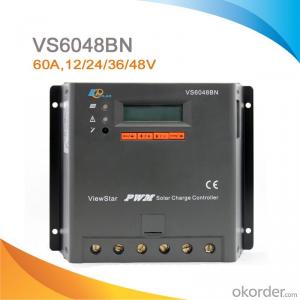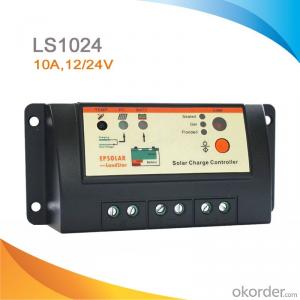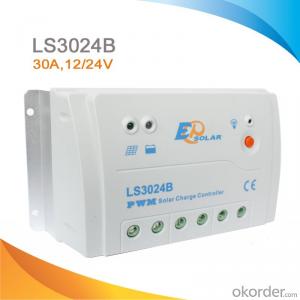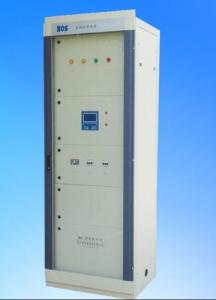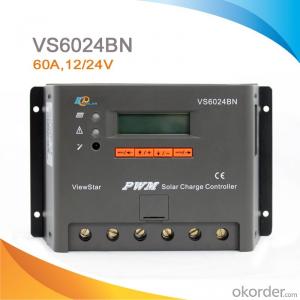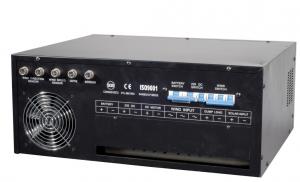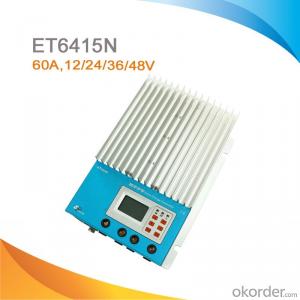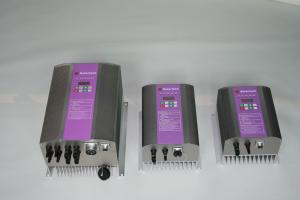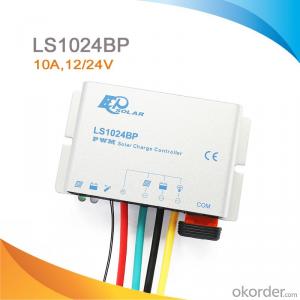Solar Charge Controllers Sudbury PWM Solar Charge Controller and LED Constant Current Driver 10A, 12/24V, LS102460BPL
OKorder Service Pledge
OKorder Financial Service
You Might Also Like
Descriptions:
A charge controller, or charge regulator is basically a voltage and/or current regulator to keep batteries from overcharging. It regulates the voltage and current coming from the solar panels going to the battery. Most "12 volt" panels put out about 16 to 20 volts, so if there is no regulation the batteries will be damaged from overcharging. Most batteries need around 14 to 14.5 volts to get fully charged.
LandStar BPL series solar charge controller combines the solar charge controller and LED constant current driver into one unit which is ideal for solar LED Lighting, especially for the application for LED lamp which requires dimmer function. It can also reduce the system cost and increase the system flexibility.
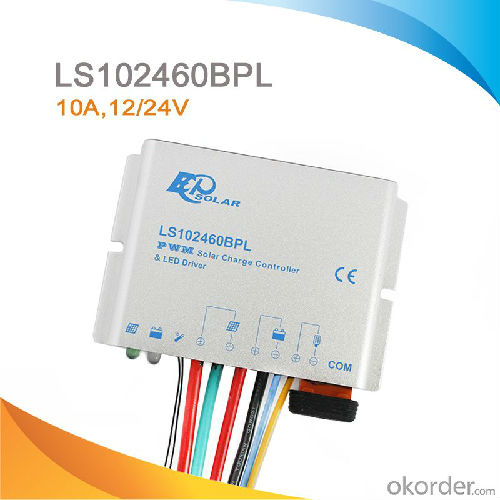

Features:
·12V/24V automatic identify or user-defined working voltage.
·Gel, Sealed, Flooded and user-defined battery type option.
·With functions of current power calculation, it is convenient to view charging and discharging energy of each day, month, year and total value.
·Wide input voltage range:DC8.0V—DC32V, compatible with 12V/24V full voltage range.
·Digital precision constant current control and the control accuracy are better than ± 2%.
·Maximum output efficiency of 95%.
·The rated output current can be adjusted at rated power and current range.
·The max output voltage can reach up to 60V
·Charge control parameter, the load control parameter and the output current value can
be set separately.
·Use of standard Modbus communication protocol for TTL232 bus connections,
communication protocol compatibility much better.
·Fully encapsulated PCB, IP67 protection.
·Aluminum housing.
Load control mode:
Manual, Light ON/OFF, Light ON+ Timer, Time Control
Electronic Protections:
·PV array short circuit
·PV reverse polarity
·High voltage transients
·Over discharge
·Overcharge
·Load overload
·Load short circuit
·Battery reverse polarity
·Overheating

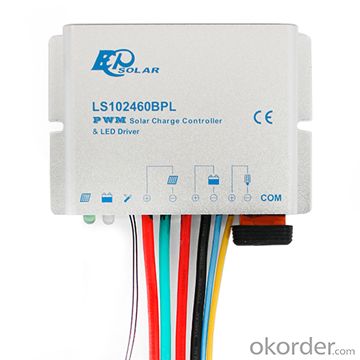
Specification:
Electrical parameters | LS102460BPL |
Nominal system voltage | 12 / 24VDC |
Battery terminal voltage | 8~32V |
Maximum PV input voltage | 50V |
Rated charge current | 10A |
Rated output power | 30W/12V, 60W/24V |
Rated output current | 2.0A |
Max. efficiency | 95% |
Output voltage range | Voltage of battery~60.0V |
Load open circle voltage | 60.0V |
Power output adjustment time | <10s |
Self-consumption | ≤9.1mA(12V); ≤7.0mA(24V) |
Control accuracy | < 2% |
Temp. compensation coefficient | -3mV/℃/2V(25℃) |
Enclosure | IP67 |
Dimension | 108.5x73x25.6 mm |
Power cable | 4mm2(PV/Batt.) 1.0mm2(Load) |
Net weight | 0.4kg |
Working temperature | -35℃ to +55℃ |
Humidity | ≤90%(NC) |
FAQ
The enclosure of charge controller:
If the controllers are used indoors or outdoors but with box, user can choose IP30 solar controller. For outdoor application, sometimes steam condenses to water when it touches a cold surface. And the water can come into controllers along with the wire. So it’s better to use high IP rating controller in humid area.
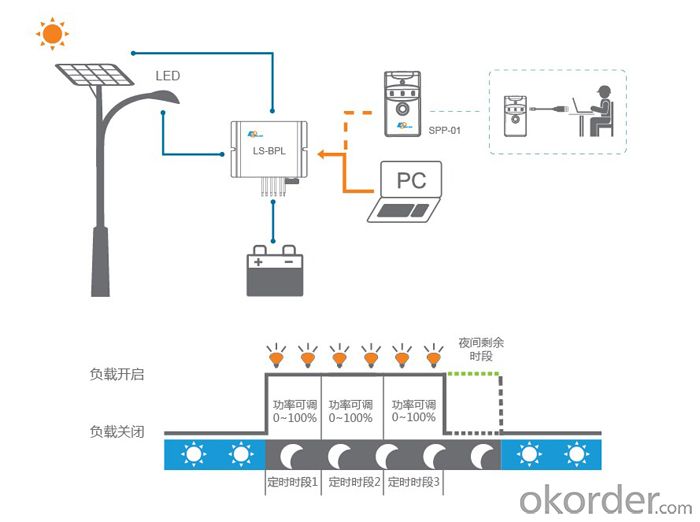
- Q: Can a solar controller be used with solar panels that are connected to a solar ventilation system?
- Solar panels connected to a solar ventilation system can indeed utilize a solar controller. The main purpose of a solar controller is to regulate the charging and discharging of batteries within a solar power system. Its primary function is to ensure efficient battery charging while safeguarding against overcharging or overdischarging. In the case of a solar ventilation system, the solar panels generate electricity, which is then utilized to power the ventilation system. To manage the flow of electricity, the solar controller can be positioned between the solar panels and the ventilation system. This allows the controller to optimize battery charging during sunlight hours and effectively control the discharge of stored energy for the ventilation system's operation. There are numerous advantages to incorporating a solar controller into a solar ventilation system. Firstly, it maximizes the efficiency of solar panels by maintaining them at their optimal voltage levels. Additionally, it prevents battery damage caused by overcharging or excessive discharge. Furthermore, a solar controller offers monitoring and control functions, enabling users to easily track and adjust the performance of the solar ventilation system. In conclusion, the integration of a solar controller into a solar ventilation system significantly improves its overall performance, enhances energy management, and ensures the durability of the system.
- Q: What is the purpose of the equalization mode on a solar controller?
- The purpose of utilizing the equalization mode on a solar controller is to effectively uphold the well-being and functionality of the batteries connected to the solar system. Typically, this mode is employed for flooded lead-acid batteries, which are commonly utilized in off-grid solar systems. Over a period of time, chemical reactions taking place inside the batteries can lead to an uneven distribution of the electrolyte and the formation of sulfation. Sulfation refers to the accumulation of lead sulfate crystals on the battery plates. These issues have the potential to diminish the battery's capacity and overall performance. The equalization mode incorporated into a solar controller is ingeniously designed to counteract these problems by deliberately applying a controlled overcharge to the batteries. This intentional overcharge assists in redistributing the electrolyte and disintegrating the lead sulfate crystals, ultimately enhancing the battery's performance and prolonging its lifespan. During the equalization mode, the solar controller heightens the charging voltage to approximately 15 volts for a specific duration, generally a few hours. This elevated voltage and extended charging period enable the batteries to attain a state of complete charge and undergo the necessary chemical reactions to renew their capacity. It is crucial to bear in mind that not all solar controllers possess an equalization mode, and it should only be employed with batteries that are recommended for equalization. It is also of utmost importance to meticulously adhere to the manufacturer's guidelines and safety precautions when utilizing this mode. In conclusion, the equalization mode found on a solar controller is employed to effectively preserve the condition and operation of flooded lead-acid batteries by redistributing the electrolyte and disintegrating lead sulfate crystals. This process has the potential to enhance the battery's capacity, prolong its lifespan, and guarantee the optimal performance of the solar system.
- Q: Can a solar controller be used in a solar-powered cruise ship?
- Yes, a solar controller can be used in a solar-powered cruise ship. A solar controller regulates the voltage and current from the solar panels to charge the batteries efficiently, which is essential for any solar-powered system, including a cruise ship. It helps to optimize the energy generation and storage process, ensuring a reliable and stable power supply for the ship's operations.
- Q: How does a solar controller prevent reverse current flow from the battery to the solar panels?
- The solar controller serves as a vital component in a solar power system, responsible for regulating the charging and discharging of batteries. Its primary role involves preventing the undesirable flow of current from the battery back to the solar panels. When the battery voltage surpasses the voltage generated by the solar panels, reverse current flow occurs. In the absence of a solar controller, this would result in the battery discharging back to the solar panels, leading to energy wastage and potential harm to the system. To counteract this reverse current flow, the solar controller employs a specialized feature known as a blocking diode. This diode acts as a unidirectional valve for the electrical current, permitting it to flow from the solar panels to the battery while effectively blocking any reverse flow. Upon the generation of electricity by the solar panels, the solar controller detects the voltage and ensures that it exceeds the battery voltage. If the solar panel voltage proves higher, the controller allows the current to flow towards the battery, facilitating its charging. However, as soon as the solar panel voltage drops below the battery voltage, the controller promptly activates the blocking diode, preventing any reverse current flow. By implementing this mechanism, the solar controller guarantees the efficient storage of energy produced by the solar panels within the battery, eliminating any loss caused by reverse current flow. This not only optimizes the overall efficiency of the system but also safeguards the battery against potential damage incurred by discharging. To summarize, the solar controller effectively prevents reverse current flow from the battery to the solar panels through the utilization of a blocking diode, which permits current to flow in a singular direction. This mechanism ensures the system's efficiency and safeguards the battery, guaranteeing optimal performance and longevity of the solar power system.
- Q: What is the role of a solar controller in preventing overcurrent in the solar panel system?
- Maintaining the safety and optimal functioning of a solar panel system heavily relies on the crucial role of a solar controller in preventing overcurrent. Also referred to as a charge controller, this device effectively regulates the flow of current from the solar panels to the battery bank or electrical load. A significant function of the solar controller is to prevent the batteries from overcharging. As solar panels generate electricity from sunlight, it is possible for them to produce more current than the battery bank can handle if not properly regulated. This surplus of current can result in overcharging, which has the potential to damage the batteries and reduce their lifespan. To prevent the occurrence of overcurrent, the solar controller actively monitors the voltage of the battery bank and makes necessary adjustments to the charging current. When the batteries reach their maximum voltage level, the solar controller either reduces the charging current or completely disconnects the solar panels from the battery bank to halt any further flow of current. This measure ensures that a safe and optimal charging level is maintained for the batteries, ultimately guaranteeing their longevity and performance. Furthermore, the solar controller also plays a vital role in safeguarding the solar panels themselves from overcurrent. In cases where partial shading occurs, a phenomenon known as "hot spots" can emerge, wherein certain sections of the solar panels receive less sunlight compared to others. This imbalance in the current flow can lead to overcurrent in those specific areas, potentially causing damage to the solar panels. To mitigate these issues, solar controllers are equipped with various protective features, including overcurrent protection, short-circuit protection, and reverse polarity protection. By constantly monitoring the current flow from the panels, the solar controller promptly disconnects them if any abnormalities are detected, effectively preventing any potential damage. In summary, the primary function of a solar controller in a solar panel system is to regulate the charging current to the battery bank, thus preventing overcharging and damage to the batteries. Additionally, it serves to protect the solar panels from overcurrent and potential damage caused by shading or other irregularities. This ensures the system's longevity, safety, and optimal performance.
- Q: How do you determine the right size of solar controller for a system?
- To determine the right size of a solar controller for a system, you need to consider the maximum current and voltage of your solar panels. The solar controller should be able to handle the maximum current produced by the panels and the maximum voltage they generate. Additionally, you should also consider the number of panels and the total wattage of your system to ensure the solar controller can effectively handle the overall power output.
- Q: Can a solar controller handle power fluctuations from the inverter?
- Yes, a solar controller can handle power fluctuations from the inverter. The solar controller regulates and controls the flow of electricity from the solar panels to the battery bank, ensuring a stable and consistent power supply. It is designed to handle fluctuations in power output from the inverter and maintain a steady flow of energy to the batteries.
- Q: How does a solar controller prevent battery under-temperature?
- A solar controller prevents battery under-temperature by monitoring the temperature of the battery and regulating the charging process accordingly. It ensures that the battery is not charged when it is too cold, as this can lead to damage or reduced performance. Instead, the solar controller either reduces or completely stops the charging process until the battery reaches a safe temperature range for charging.
- Q: Can a solar controller be used with a mobile solar setup?
- Yes, a solar controller can be used with a mobile solar setup. A solar controller is designed to regulate the charging and discharging of batteries in a solar power system, ensuring the batteries are charged efficiently and preventing overcharging or damage. Whether it is a fixed or mobile solar setup, a solar controller helps optimize the performance and lifespan of the batteries.
- Q: Are there any environmental benefits of using a solar controller?
- The utilization of a solar controller brings forth various environmental advantages. Firstly, it aids in maximizing the efficiency of solar panels by effectively regulating the electricity generated and transferred to the battery or grid. This regulation ensures optimal performance, ultimately reducing the necessity for additional energy sources like fossil fuels, which are known contributors to air pollution and greenhouse gas emissions. Consequently, the utilization of a solar controller can effectively diminish the carbon footprint associated with energy generation. Secondly, solar controllers have the capacity to prolong the lifespan of batteries used in solar systems. By preventing overcharging or deep discharging, these controllers effectively maintain the health and efficiency of batteries, reducing the need for premature replacements. This reduction in battery waste is critical in minimizing environmental impact, as batteries consist of toxic chemicals that can detrimentally affect the ecosystem if not disposed of properly. Additionally, solar controllers often incorporate advanced features, such as MPPT (Maximum Power Point Tracking) technology, which optimizes the energy conversion process from the solar panels. By extracting the maximum amount of power from the panels, MPPT controllers enhance overall system efficiency, thereby reducing the need for additional solar panels and conserving natural resources. In conclusion, the utilization of a solar controller offers numerous environmental benefits, including decreased reliance on fossil fuels, minimized carbon emissions, reduced battery waste, and improved energy conversion efficiency. By effectively harnessing the power of solar energy, solar controllers contribute to a more sustainable and eco-friendly future.
Send your message to us
Solar Charge Controllers Sudbury PWM Solar Charge Controller and LED Constant Current Driver 10A, 12/24V, LS102460BPL
OKorder Service Pledge
OKorder Financial Service
Similar products
Hot products
Hot Searches
Related keywords




